How to make your WordPress website multilingual
These tools, plugins and translation services are all you need to make your website multilingual.
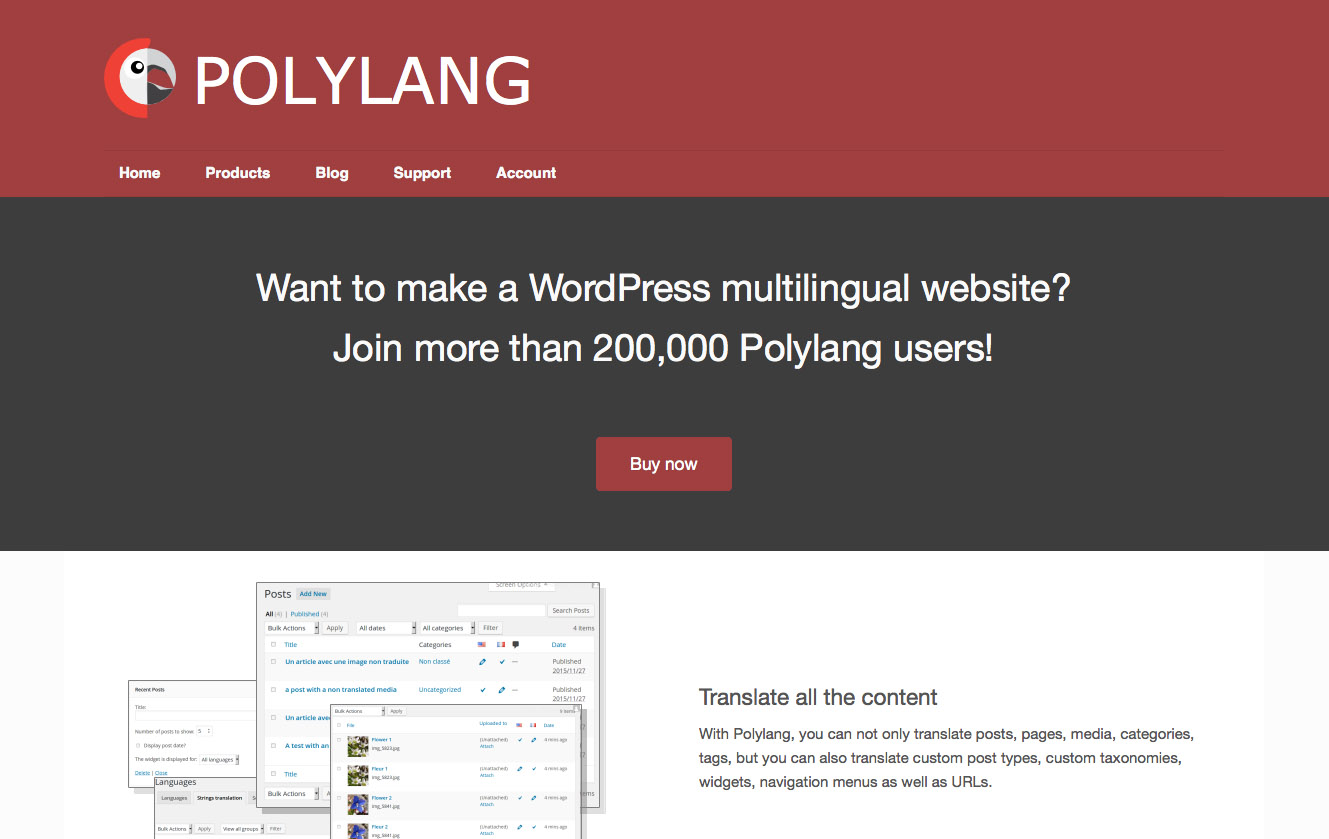
In the top 10 languages used on the internet, English ranks first, with nearly 950 million users. This is followed by Chinese with slightly more than 750 million, then Spanish with more than 270 million users.
These three languages alone make up a giant market, full of potential customers. So for businesses wanting to expand internationally, it's worth making your site multilingual.
The benefits
Making your site multilingual helps you reach more global customers. When a French online store translates its websites into English, for example, it can open up its products to nearly 950 million extra users.
When I was staying in Japan and was looking for a nice place for lunch, I'd use Google. In most cases, I'd end up on websites from the list of search results that had an English version.
One reason for that is because I do not understand Japanese (yet), and another is that it saves me from eating a dish that is totally unknown to me. Google is able to promote the English version of websites in its rankings when it determines that you're using an English version of the browser.
Making your site multilingual helps you reach more global customers
Having a multilingual site can enhance your professional image, increase your brand awareness and lets users from different countries and cultures understand your products, how you can help them with your services and solutions, and the way your business runs.
It can also help you gain your site visitors' trust. When a customer encounters an issue and needs support or assistance, having a website in their native language is helpful. It helps them feel more confident that they can rely on someone and ask a member of your team for help.
Get the Creative Bloq Newsletter
Daily design news, reviews, how-tos and more, as picked by the editors.
Finally, it can also help you boost your SEO. Users can be directed from the search results directly into the version of your website localised to their country or language.
Methods of translation
There are a few of different methods you can use to translate your site. The fastest is by machine translation. This method is good for urgent translations and messages that need to be translated immediately, but machine translations are full of misspellings and logical errors that can often lead to misunderstanding the actual content.
You can also try the Google Language Translator plugin, but you'll notice the results are unreliable. Human translations are by far the most accurate source of translations, as only humans are able to understand the different cultural, linguistic and semantic factors that are able to grasp and translate the full context. So for things like poetry, idioms and jokes, a human translator is vital.
Human translations can be divided into three groups: in-house, freelance, or translation agencies. In most cases agencies can provide expertise and specialisation in areas like legal documents translations, school records, and so on.
Popular translation services and websites where you can find professionals to translate your website content include the following: strakertranslations.com, icanlocalize.com, upwork.com, fiverr.com, proz.com, textmaster.com, tolingo.com and onehourtranslation.com.
Methods
Before sending your whole website for translation, you should consider the following:
- What effect do you want to achieve?
- Do you need to translate your whole site, or only the parts that will allow users of a different language find the necessary content?
- Are users from the same cultural circle?
- Would it work to change only the language of specific website elements like headers, text, buttons, and so on?
- How will the translation effect the layout of your website (for example, Hebrew and Arabic users read from right to left)?
In some cases you don't even need a plugin. For example, you can create only one page in the second language with all the required information; create a specific category or custom post type with the second language; or consider duplicating your website and running it on different domains (the disadvantage here is that you will need to maintain two or more websites). Finally, if you have enough knowledge you can run a WordPress multisite installation.
Plugins
If none of the suggested methods work for you, that's the time to consider using a plugin. Before you choose a premium solution, try some of these free plugins and check how they work for you...
01. MultilingualPress
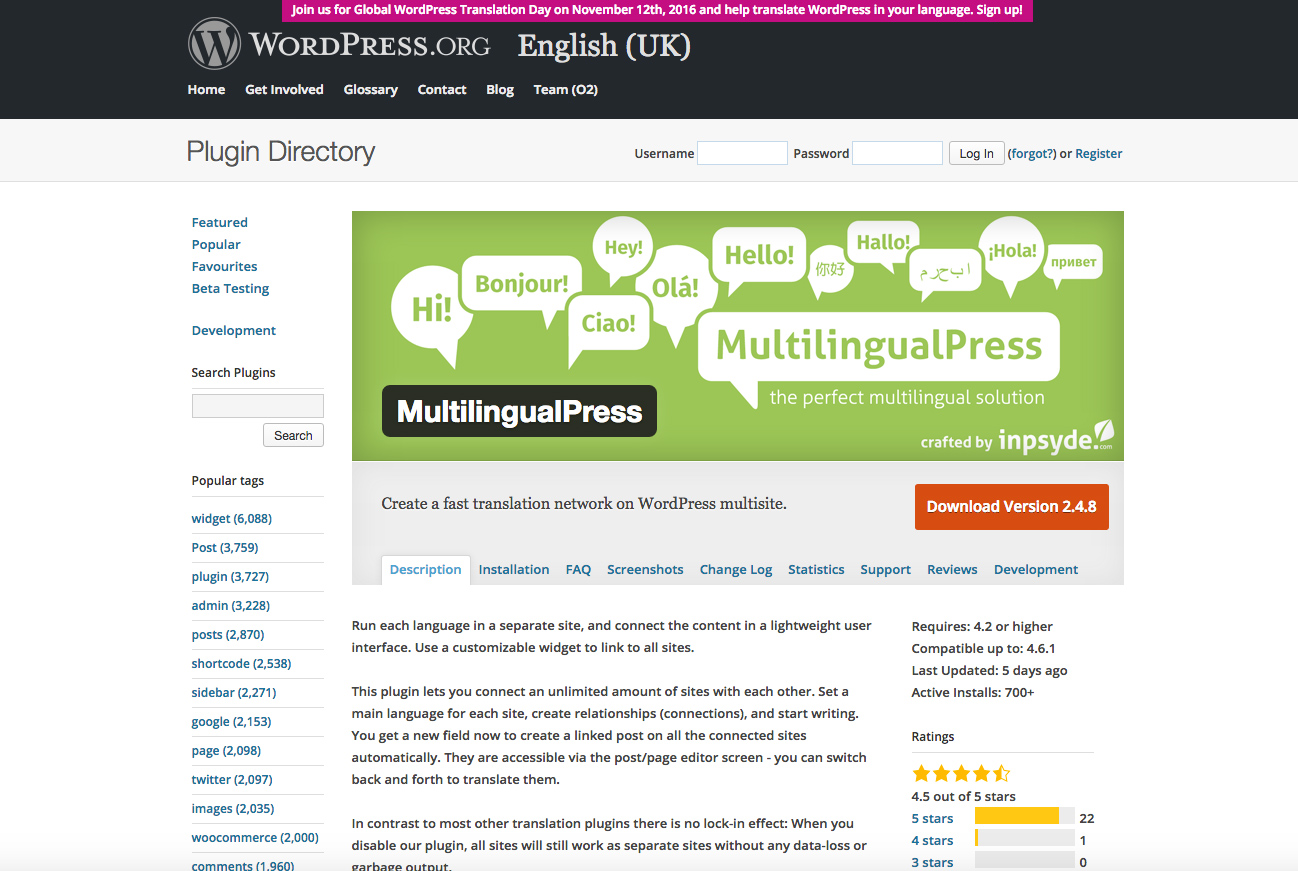
This is based on Multisite, a powerful WordPress core feature. It enables you to create a network of sites in different languages, all interconnected with and related to each other. It comes in two versions, Free and Pro with dedicated Premium Support.
02. Polylang
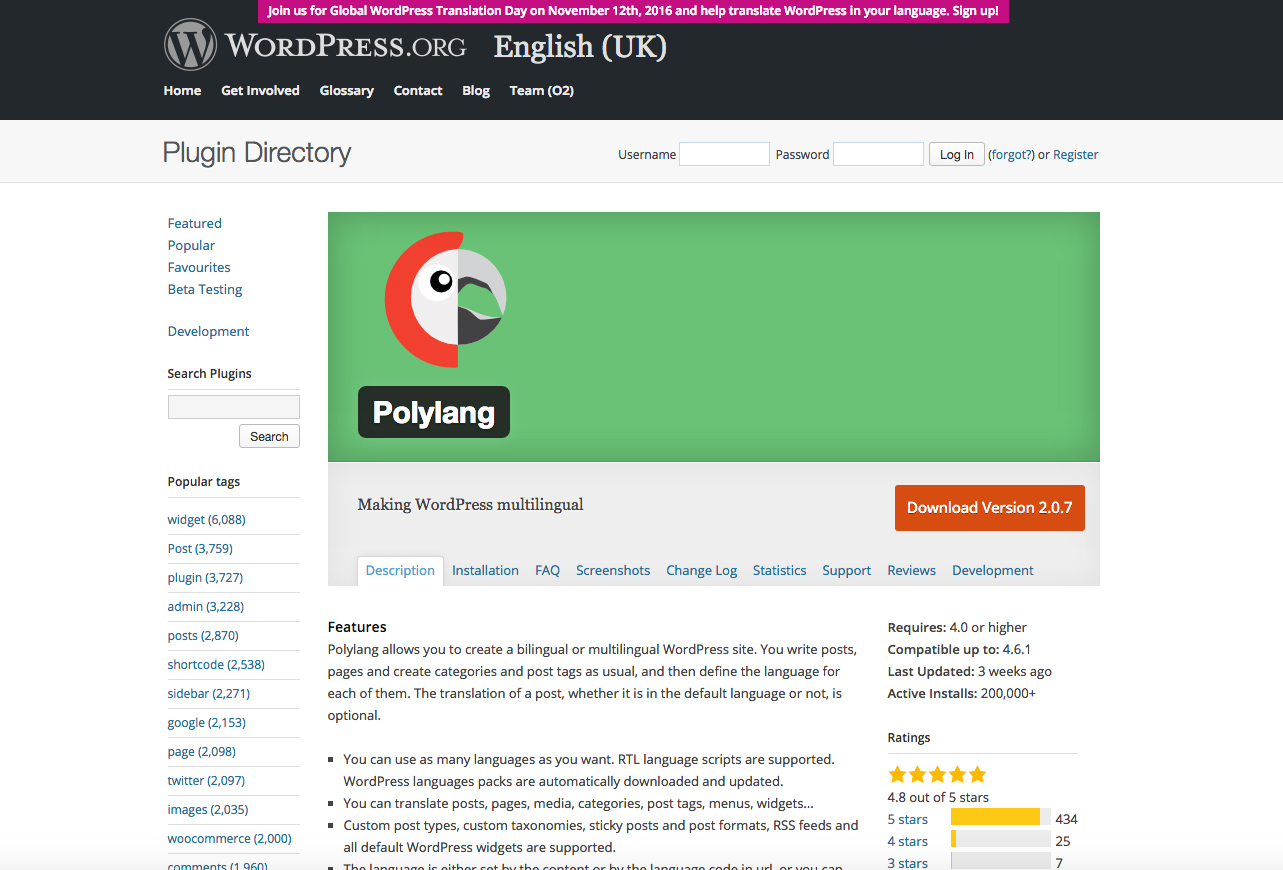
Another free plugin. You write posts, pages and create categories and post tags as usual, and then define the language for each of them. The language is either set by the content or by the language code in the URL. You can also use one different subdomain or domain per language. Polylang comes with a customisable language switcher provided as a widget or in the navigation menu. For a professional or automatic translation service, you can install the Lingotek Translation add-on.
03. Bogo
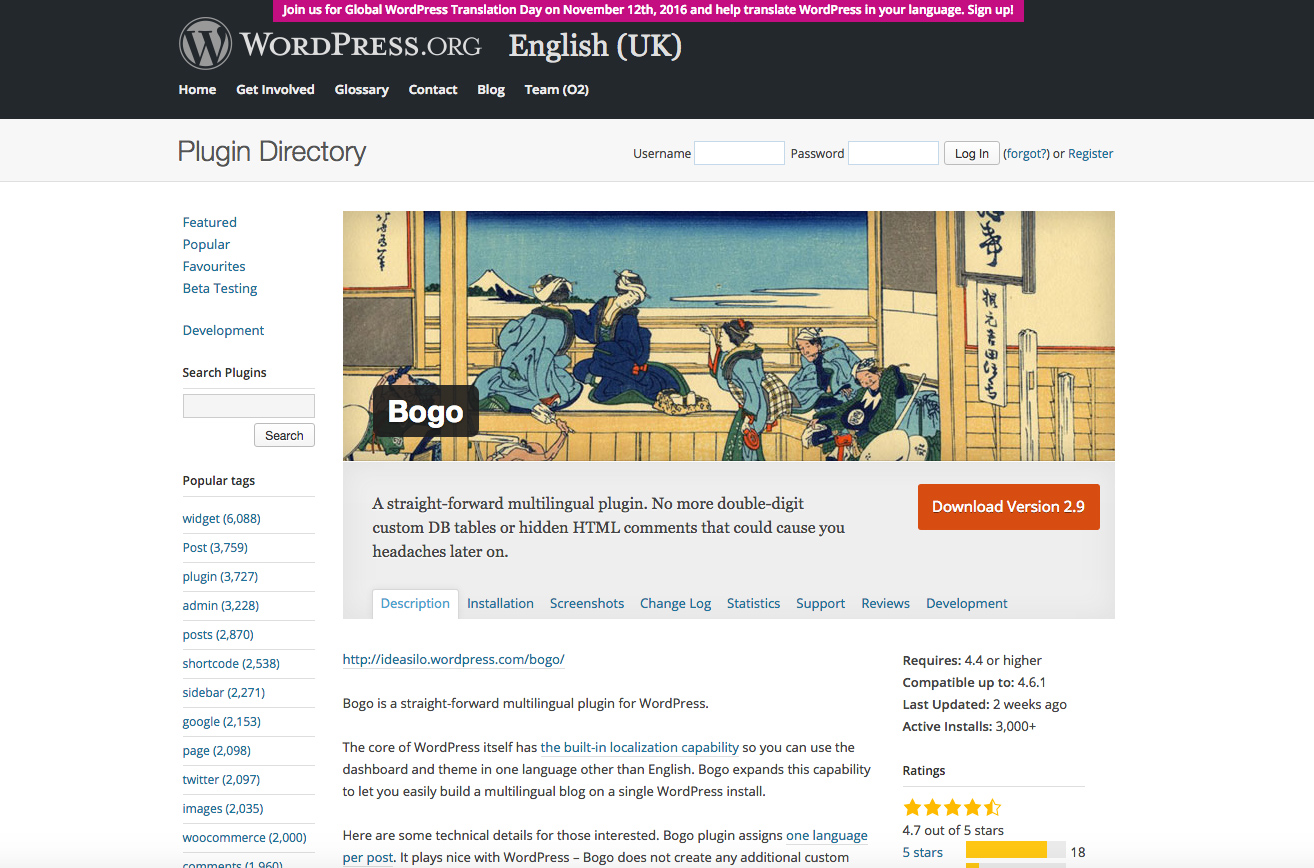
Bogo was created by Takayuki Miyoshi, the author of the Contact Form 7 plugin. It's simple to use and conflict-free; it assigns one language per post and does not create any additional custom tables on your database.
Again, if these free plugins aren't quite meeting your needs, there are some premium options you can try:
04. Straker Translations
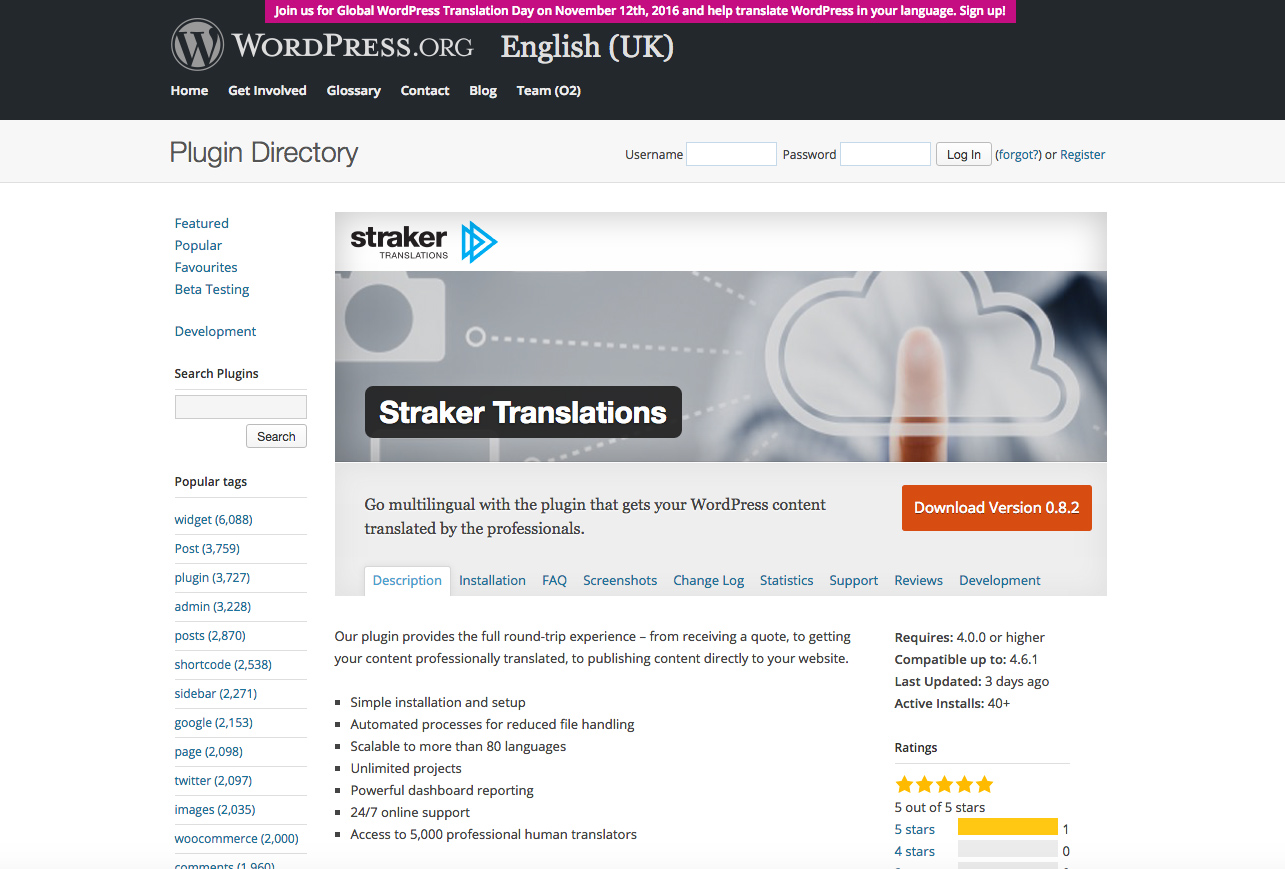
Straker Translations combine high-quality human translation services with top level automation of workflow processes. All you need to do is select the content you would like to send for translation, get the quote and enjoy your content being professionally translated and published directly to your website.
05. WPML
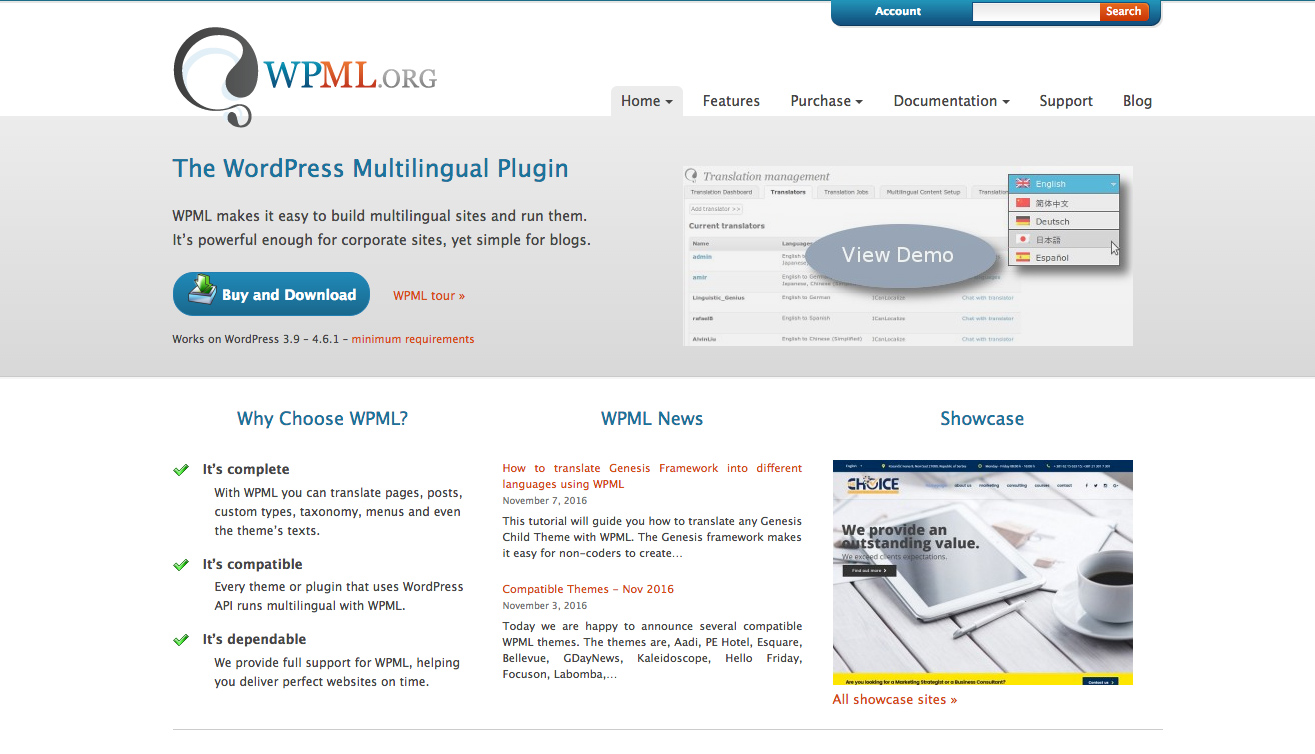
WPML is one of the most popular paid multilingual plugins. It is a very complex solution with tons of features and global support. WPML allows you to create translator accounts on your website and it's integrated with the translation service, icanlocalize.com which allows you to send your content to professional translators.
The most common issues are related to performance where the resources are very minimal that are not enough to support your website and keep it running smoothly. Additionally, there are plugins and themes that are not compatible with WPML. As a former supporter at WPML, my tip is to only enable the languages that you really need to use, otherwise you can crash your website.
Global future
In WordCamp San Francisco 2014, Andrew Nacin said "The future of WordPress is global." I fully agree with that. WordPress has a very big potential; it's currently running on over 25 per cent of all websites globally.
There is no one perfect solution for translating a website; everything depends on your needs, who you want to target and what end result you expect. Don't be afraid to experiment with different solutions, but try to keep it also simple to avoid performance issues and user confusion.
This article was originally featured in net magazine issue 285; buy it here

Thank you for reading 5 articles this month* Join now for unlimited access
Enjoy your first month for just £1 / $1 / €1
*Read 5 free articles per month without a subscription

Join now for unlimited access
Try first month for just £1 / $1 / €1
